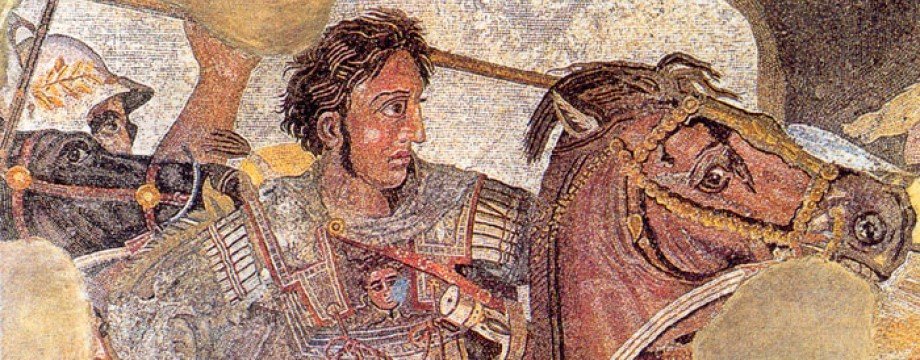337
Spring Philip orders Alexander back to Pella (Peter Green*)
336
Spring Parmenion and Attalus lead the Macedonian advance army into Asia Minor (Livius, Peter Green)
335
Early Spring Alexander campaigns in Thrace and Illyria (Peter Green)
NB The Landmark Arrian** dates this campaign to Spring (as opposed to Early Spring. This applies to all similar references below)
Spring Alexander razes Thebes; Greek cities submit (Landmark Arrian)
334
March - April Alexander crosses into Asia Minor; beginning of his anabasis (Peter Green)
NB
Michael Wood*** dates the crossing of the Hellespont to May
The Landmark Arrian dates the crossing to Spring
333
March - June Memnon’s naval offensive (Livius)
Early Spring Memnon dies (Peter Green)
Spring Alexander arrives in Gordion where he undoes the famous knot (Landmark Arrian)
Spring (Possibly late spring?) Alexander passes through the Cilician Gates having taken Pisidia and Cappadocia (Landmark Arrian)
NB With reference to the death of Memnon, referred to above, the Landmark Arrian dates it to ‘Spring’ 333, during the Persian navy’s fight against the Macedonians. Contra Livius (below), it adds that after his death, and in the same year, the ‘Persian naval war falter[ered]’
332
Spring The Persian Fleet disintegrates (Livius)
January - September The Siege of Tyre continues (Michael Wood)
331
March Alexander visits Siwah (Livius)
NB Peter Green dates Alexander’s Siwah visit to ‘Early Spring’
Spring Alexander resumes his march towards Darius (Landmark Arrian)
330
Spring Alexander orders the royal palace in Persepolis to be burnt (Landmark Arrian)
Spring Alexander finds the body of Darius (Landmark Arrian)
329
Spring First crossing of the Hindu Kush (Michael Wood)
NB Peter Green dates the crossing to ‘March - April’
Spring Alexander pursues Bessus across Bactria/Sogdia (Landmark Arrian)
Spring Bessus is betrayed by his officers and handed over to Alexander (Landmark Arrian)
Spring Alexander quells an uprising along the Jaxartes (Tanais) River (Landmark Arrian)
328
Spring Alexander campaigns in Bactria and Sogdia (Michael Wood)
Spring The Sogdian Rock is captured (Michael Wood)
327
Early Spring Alexander marries Roxane (Michael Wood)
NB The Landmark Arrian dates the wedding to Spring
Early Spring The Pages’ Plot (Michael Wood)
NB The Landmark Arrian dates the Pages’ plot (and Callisthenes subsequent arrest/possible death) to Spring
Early Spring Callisthenes is executed (Michael Wood)
Spring Pharasmanes and Scythians seek an alliance with Alexander (Landmark Arrian)
Spring The Sogdian Rock is captured (Livius, Peter Green, Landmark Arrian)
Spring The Rock of Chorienes is captured (Landmark Arrian)
Spring Craterus eliminates the last rebels (following Spitamenes’ death in the Autumn of 328) (Landmark Arrian)
Late Spring Second crossing of the Hindu Kush (Michael Wood)
326
Early Spring The Aornos Rock is captured (Michael Wood)
NB The Landmark Arrian dates the capture of the Aornos Rock to Spring
Early Spring Alexander meets Hephaestion and Perdiccas at the Indus River, which the reunited army then crosses (Michael Wood)
NB The Landmark Arrian dates the crossing of the Indus to Spring
Early Spring Alexander reaches Taxila (Michael Wood)
NB
The Landmark Arrian lists the sequence of events following Alexander’s capture of the Aornos Rock slightly differently to Michael Wood:
Wood Siege of Aornos > Alexander meets Hephaestion & Perdicas at the Indus > Macedonians cross the Indus > Alexander arrives in Taxila
Landmark Arrian Siege of Aornos > Alexander sails down the Indus to Hephaestion’s and Perdiccas’ bridge > Alexander visits Nysa > Alexander receives Taxiles’ (‘son of the Taxiles he met in the Indian Caucasus’ the previous summer) gifts > Alexander crosses the Indus > Alexander meets Taxiles
Spring Battle of the Hydaspes River (Landmark Arrian)
Spring Bucephalus is buried (Landmark Arrian)
Spring Alexander founds Nicaea and Bucephala (Landmark Arrian)
Spring Abisares submits to Alexander (Landmark Arrian)
325
Spring - Summer Journey down the Indus River (Michael Wood)
Spring Alexander defeats the Brahmins, Musicanus, and Sambus (Landmark Arrian)
324
February - March Alexander’s journey to and arrival in Susa (Peter Green)
NB The Landmark Arrian dates Alexander’s arrival to Spring. It adds that after his arrival he purged the corrupt satraps, held the mass wedding ceremonies,and forgave his soldiers’ debts/awarded ‘gold wreaths to officers’; this did not, howeverm stop tensions rising ‘over Alexander’s moves to integrate the army’
March Alexander meets Nearchus in Susa (Livius)
March Susa Marriages (Livius)
March Alexander issues the Exiles’ Decree (Peter Green)
March Alexander issues the Deification Decree (Peter Green)
Spring Alexander explores lower Tigris and Euphrates (Landmark Arrian)
Spring The 30,000 epigoni arrive in Susa (Peter Green)
323
Spring Alexander returns to Babylon after campaigning against the Cossaeans (Peter Green)
Spring Bad omens foreshadow Alexander’s death (Landmark Arrian)
Spring Alexander sends ‘spoils of war to Greece; he is hailed as a god by Greek envoys
Spring Alexander makes preparations for an Arabian campaign (Landmark Arrian)
Spring Alexander orders ‘extravagant’ honours to be given to Hephaestion (Landmark Arrian)
*Peter Green Alexander of Macedon 356 – 323 B.C. A Historical Biography (University of California Press 1991)
** The Landmark Arrian Ed. James Romm (Pantheon Books 2010)
***Michael Wood In the Footsteps Of Alexander the Great A Journey from Greece to India (BBC Books 2004)
Notes
- This chronology is part of an on-going work. If you see any mistakes or omissions please feel free to let me know!
